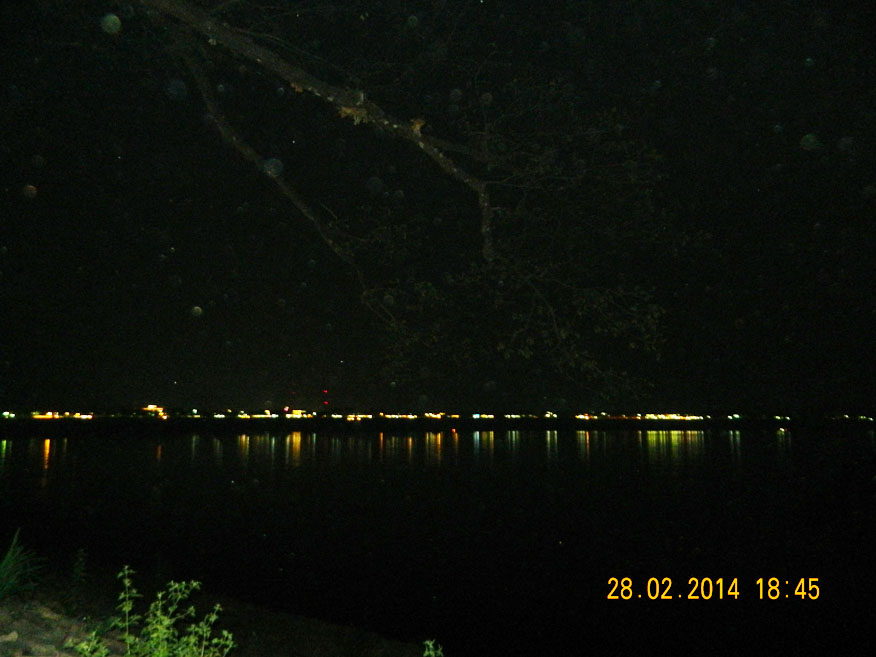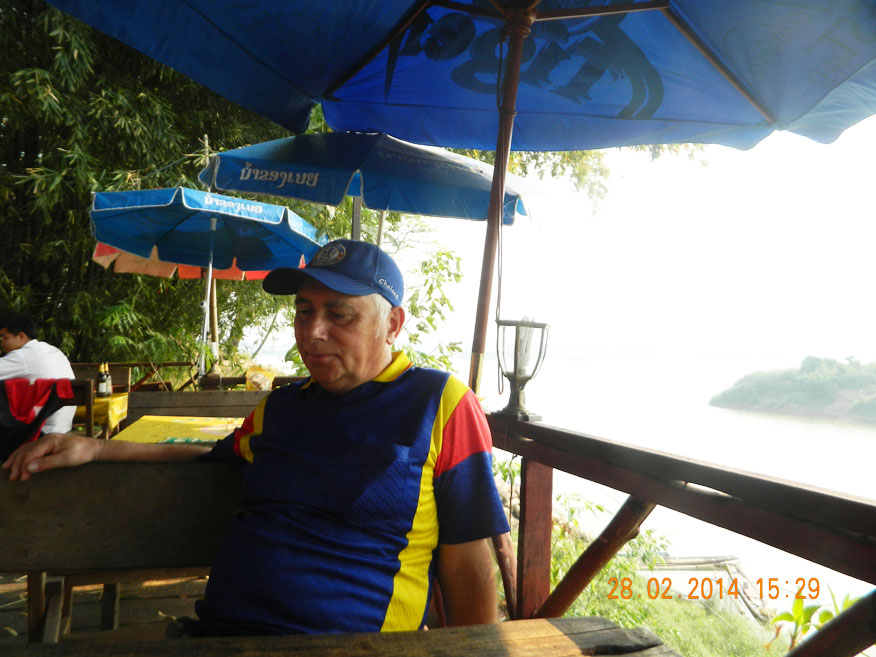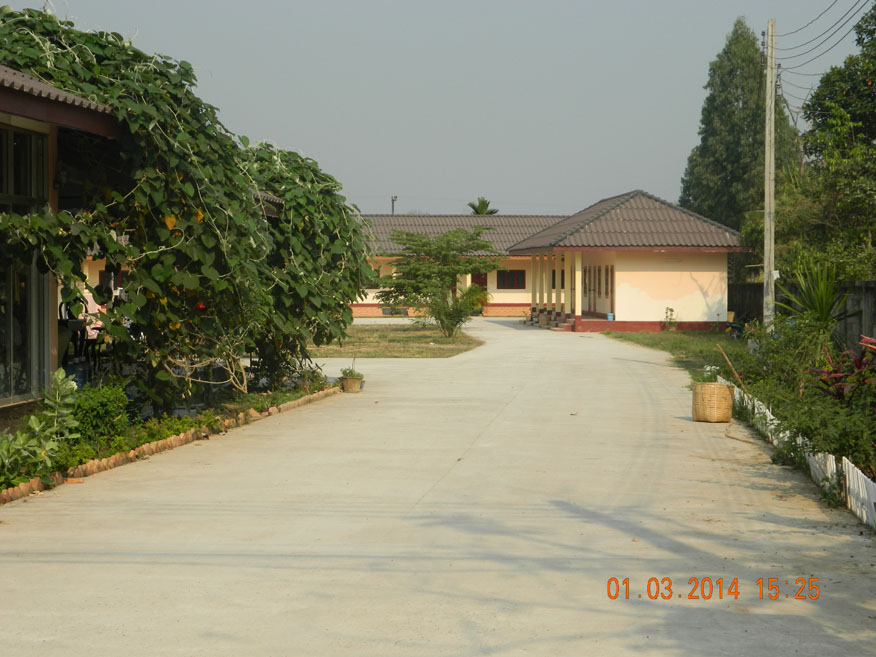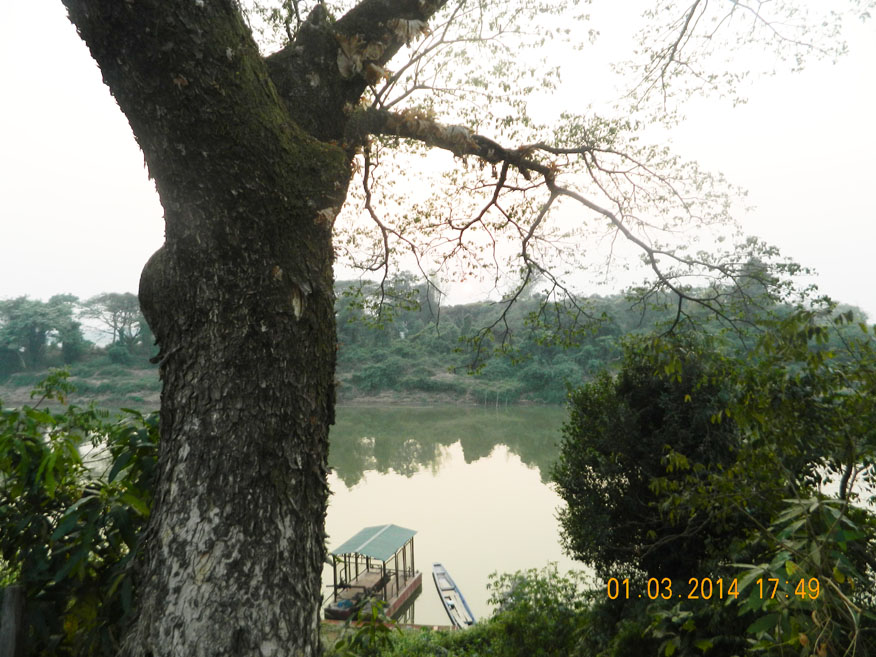
- HOME PAGE
- TOURS LIST
- SITE INDEX
- THIS TOUR SUMMARY
-
TOUR BLOG
DAY 1 - BANGKOK/NAKHON PHANOM/THAKHEK, 25/26 February 2014 DAY 2 - THAKHEK, 27 February 2014 DAY 3 - THAKHEK/PAKSAN, 28 February 2014 DAY 4 - PAKSAN, 1 March 2014 DAY 5 - PAKSAN/PHONSAVAN, 2 March 2014 DAY 6 - PHONSAVAN, 3 March 2014 DAY 7 - PHONSAVAN, 4 March 2014 DAY 8 - PHONSAVAN, 5 March 2014 DAY 9 - PHONSAVAN, 6 March 2014 DAY 10 - PHONSAVAN, 7 March 2014 DAY 11 - PHONSAVAN/VANG VIENG, 8 March 2014 DAY 12 - VANG VIENG, 9 March 2014 DAY 13 - VANG VIENG, 10 March 2014 DAY 14 - VANG VIENG, 11 March 2014 DAY 15 - VANG VIENG, 12 March 2014 DAY 16 - VANG VIENG, 13 March 2014 DAY 17 - VANG VIENG/UDON THANI, 14 March 2014Friday 28 February 2014
Central Laos Tour – The End!.......Today this central Laos tour comes to an end but not for any sinister reason. My thoughts overnight focus on the future of the tour and in particular what more I can achieve by staying here. Certainly I'm comfortable in my hotel and living well within my means for a change but with excursions into the mountains are out off the equation at this time I've decided to move on. I'm heading north and west to Pakxan in Borikhanxai province which is clearly in northern Laos.
Thakhek exit......I am leaving Thakhek feeling I have not exploited the opportunity to explore the natural delights of Khammouane province but on the other hand this location was never on the tour to begin with: But I don't regret coming here. It certainly fills a gap in my knowledge about Laos. Regarding transport, the options are most limited. There is a VIP bus which departs from here, but I understand it's an overnight service. As I'm not heading as far as Vientiane I'm restricted to the local buses and I just know what that means.
Without arranging anything I take a samlor first to cash some money n the town; I will get a better rate for my baht than at the hotel or in local shops, then it's off to the bus station where I'm told buses leave for Vientiane every hour. I arrive in time for the 11 am service which as I expected is far from first class. It's not strictly correct to call these 'local' buses but although you can flag one down almost anywhere, they do cover vast distances. This 11 am service for Vientiane will take some seven hours. Thankfully I'm not going that far. Really, to ask somebody how long these journeys take invites an imprecise response. It takes as long as it takes. My advised three hours for the trip to Pakxan actually takes four. Nevertheless, with an early afternoon arrival it's not so demanding despite the condition of these ancient machines. It's hard to imagine anything so old running of four wheels. This relic chugs out of Thakhek and I begin to understand why Thakhek Old Town is so neglected. Clearly those with means have moved to the suburbs. In fact during the whole of my journey north today, so called 'shanties' are few and far between; most people living in reasonable accommodation, much better than in Cambodia, I note.
As the bus heads north, passengers come and go, and it proves necessary to issue stools which fill the isle. That's a headache for those seated at the back of the bus. As it crosses the Ka Ding River near its confluence with the Mekong, I sense I'm not far from Pakxan and at around 3pm it arrives in a dusty street opposite the bus station.
Viengkham Guesthouse......Generally speaking, arriving in a strange town is the most stressful part of travelling. Here in Pakxan there is precious little evidence of tourist activity. It has to be remembered that I am here only to simplify my route into Xieng Khouang province, the furthest point of my travels in Laos. Instinctively I chose to head for the Mekong riverside where I'm told I will find suitable accommodation. Understandably there is difficulty in getting my instructions through to a samlor driver but after some perseverance he gets it. It's worth pointing out that Lao is a language closely related to Thai so some knowledge of either is most useful here. I'm deposited at Viengkham Guesthouse where my initial impressions are good. Comfortable air-conditioned rooms are available at a fraction of the price I'm used to paying. In fact, I take the room for two nights, just fractionally more than I paid for one night in Takhek. There is, however, no fridge or Wi-Fi. The family that runs this small enterprise proves most accommodating. With the time approaching 4 pm it's time for a late lunch (or early dinner).
Naam Xan......In writing my blog for Laos I should point out that there are some place names that are not easily converted into pronounceable English without some help. In particular, seemingly from China is the use of the letter 'X'. Some versions are written with the 'X' converted to 'S' but in fact this sound is closer to 'Sh' as in sheep. 'Naam' is interchangeable with Thai as the word for water, in this case 'river'. So Naam Xan is the Shan River and Pak (mouth) is the mouth of the River Shan and Pakxan, the name of this town where the Shan River empties into the Mekong. An impressive sight it is too facing across towards Beung Khan in Thailand. However, without a bridge these opposing towns are not on a par with their more distinguished neighbours. A meal is taken on the banks of the Shan just a few hundred metres from the mighty Mekong. I'm going to enjoy a beer today, a rarity in recent weeks. More importantly I'm into my third day in Laos without incident and on the verge of turning my fortunes around. In the evening I take a stroll along the Mekong. I've yet to see a foreigner since I left Thakhek. It's a great feeling and a sense of achievement. I turn in for a peaceful night or so I thought!
Next Page.
Khammouane Province
Night View from Thakhek towards
Beung Khan, Thailand
Bolikhamsai Province
Relaxing on the San (Xan) River

Viengkham Guesthouse

San (Xan) River, Pakxan